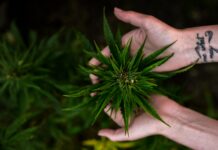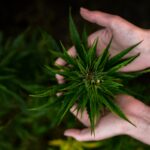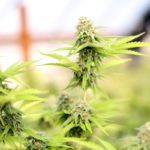From perfecting and streamlining new ways to efficiently breed and reproduce cannabis clones, to state-of-the-art extraction techniques, Canada’s legal industry has opened the door to technological advancements that old-school farmers and citizen scientists couldn’t have dreamed of decades ago.
Meet Dr. Ivan Casselman, a Cannabis Science Advisor and third-generation cannabis grower and pioneer.
While much of Dr. Casselman’s academic research focused on a psychedelic plant called Salvia divinorum, he is currently “almost 100 percent” focused on researching cannabis and optimizing existing technology for cannabis. He is an ethnobotanist, an analytical phytochemist and plant geneticist.
But rewind 20 years and Dr. Casselman was guerilla growing in the bush. He’s now finding solutions to the struggles he experienced first-hand back then as a grower – and a whole lot more.
As with much of his work in the cannabis space to date, this research has involved identifying existing technology from other industries and learning how to apply it to the complex cannabis plant.
“That’s where the real work begins,” Casselman told BotaniQ Magazine. “Cannabis is a hyper-complex plant. It’s three or four times more complex than most other medicinal plants so it takes a lot of work to optimize existing technology for cannabis,once they’re optimized we can start looking at the commercialization of the technology and development of consumer products.”
Dr. Casselman has thus far been involved in the start-up, growth and expansion of several plant medicine companies in Canada and beyond.
“One thing that really underpins my design philosophy is that I like things that are simple. Simple, as in not having tons of additives and preservatives. I think we’ve got the kind of technology now in other industries that we can really look at formulating good quality products that are healthy and not reliant on heavy chemicals to make products last or taste good. There’s always going to be a place for people like me because cannabis is such a complex plant. When formulating cannabis products it is not as easy as just adding cannabis to it. There’s always tweaking and special things you have to do to customize cannabis products, especially when they are destined for sale in a regulated market.”
That’s where Dr. Casselman comes in.
His cannabis research began in 2018 and centred on CO2 extraction. As Dr. Casselman puts it, he really “went down the rabbit hole” as he began exploring this method.
“CO2 is a very interesting compound because at specific temperature and pressure it acts as both a gas and a liquid this state is called supercritical. Unlike a liquid solvent like ethanol, CO2 can penetrate the cell walls of the cannabis like a gas and then dissolve the target compounds as a liquid. The application of CO2 is very, very interesting, especially when you want to extract as many compounds as you can from the cannabis plant,” he explained. “CO 2 is very efficient at pulling everything out – cannabinoids, your terpenes, fats, waxes, dyes, lipids, etc. With CO2 you get a very complete extraction but it does add a lot of post processing.”
Dr. Casselman said this method of extraction is not economically scalable for large operations, but he still predicts it has an important role to play.
“I think CO2 is going to have a lot of interesting applications in the future.”
Also in 2018, Dr. Casselman studied the mechanical nano emulsion of cannabinoids, which was an emerging trend at the time.
“Being able to create water-soluble cannabinoids is a big deal,” he said. “There are two approaches. First, you can use chemical emulsifiers, and we see these on packaged labelling from anything like chocolate bars to ice cream. You can walk down the grocery store and almost every packaged good ends up with some sort of emulsifier. What I looked at was a different approach – mechanical emulsification. Essentially you use a machine which applies a high scheer force to break apart large particles to a smaller, or nano size. This allows the particles to suspend in the water without settling out.”
Dr. Casselman said mayonnaise is a classic example of emulsification.
“If you just mix all the components of mayonnaise together, they’ll separate out but the trick to good mayonnaise is to blend it in a certain way to create a homogenous mixture this is the goal with cannabinoids. Cannabinoids and water do not mix,” he said. “So if you can get those cannabinoids small enough so they can float in the water, and you’ve got all these little droplets, then you can create a consistent product like drinks, topicals, any number of things that don’t have a fat-base or oil-base materials in the product. A lot of things are water-based.”
The goal of the research involved ideally formulating products no additives, or at least greatly reduced reliance on chemical additives.
“My formulation design principles are that simple is better so I try to design high-quality safe products that do not rely on chemical additives, or at the very least only use small amounts.”
Dr. Casselman noted there are currently no regulated products on the market in Canada in this space, since the regulations which govern them have only come into effect as of October 2019, but he said there are several options available from U. S. companies right from buying the machine and doing it yourself all the way through to buying water-soluble THC and CBD concentrate that can be added to product.
“There are lots of people marketing both the mechanical and the chemical emulsifiers that help with this so I think, to identify the next really big step, is to really start looking at the stability,” Casselman revealed. “When we look at natural health products, all of those products have gone through fairly rigorous stability trials so they know what a product’s going to look like after six months or a year in the fridge, or if you leave it on the dash of your car for a month.
“With the water-soluble cannabinoids we create very, very small droplets in the water but how long does it take for those little small droplets to slowly find each other and get bigger and bigger and bigger until they are heavy enough to start separating out?” he added. “So if it was a year that would be great. Is it six months? Is it 18 months or two years? We don’t know. Normally for a drink could be looking at least one year stability, that would be ideal, but we’ve got a few years until we really start having a deep understanding of what the stability of water-soluble cannabis is. But we’ve got to get those products out, we’ve got to get them on the shelf and into the real world to really understand what’s going to happen.”
His latest cannabis research project involves cloning and genetics, and this particularly excites Dr. Casselman as a former black market grower.
“At the moment the way that we clone plants is the way that it’s always been done, a method called sesemellia. Basically,you take a mother plant and cut small branches off the plant. These branches are then treated with rooting hormone and planted into soil or Rockwool. The new clones are kept humid in a propagation tray for a week or so and they root. It’s a fairly effective way to control your own genetics on a small scale,” Dr. Casselman explained.
“What we have now, though, is millions and millions of square feet of capacity to grow cannabis now in Canada and those clones, the old school methodology of cloning becomes less practical as we move forward because of the space and the time it takes and that we don’t necessarily get a complete standardization of the genetics by doing that. It is possible to get genetic drift and variation in the final plant. Or what happens if your mother plants get powdery mildew. That powdery mildew will then become systemic in all of the successive generations of plant and you can never get rid of it. Tissue culture, and micro-propagation techniques, is a way of miniaturizing that whole process.”
Dr. Casselman is studying a “very special mix of chemicals” for propagating cell lines and plantlets. This mix looks like a jelly and could help to streamline this process of cloning for mass production – and solves transport issues.
“You put a single cell in the propagation matrix and the cell will start to divide these are undifferentiated cells, similar to human stem cells. At this point, the plant has not started to develop a stem or roots or a leaf. However if you transfer these cells into a different propagation matrix those undifferentiated cells will start to develop into a plantlet, a mini clone.” he explained.
This method can ramp up production significantly.
“A propagation tray has the capacity for up to 40 clones. With micropropagation techniques you can fit 10 times that number in the same space. The tray of clones are also very difficult to transport, however, you can encase the micropropagated plantlets in a jelly like matrix and create synthetic seeds, exact genetic copies which can now be transported easily,” Casselman explained.
“And instead of relying on sexual breeding, where you’ve got a male pollen and a female bud, and you paint the pollen on the bud then you wait for the female plant to grow the seed and then you’ve got a seed, but you don’t have a genetic exact copy of the two plants you’ve bred,” he noted. “What you can do with the tissue culture technology is rapidly breed different strains with each other, eliminating the need to produce seeds. You still have to grow the plants and test them but in much less time. When you find the strain that works for your criteria then you can use tissue culture, and make exact copies and go from there.”
Dr. Casselman said he is fascinated by these advancements, and continues to look for ways to utilize existing technology in other industries for cannabis.
“Food production and agriculture are becoming increasingly technological and to feed the planet, we’re gonna have to get more technological in order to create our industry and keep it growing: We are going to have to rely on technology as well.”
Dr. Ivan Casselman is a regular speaker at industry events such as MJBiz, and contributor to publications such as the Journal of Ethnopharmacology. His expertise is sought out for his ability to effortlessly combine both the integrity of science and the practicality of business.



















